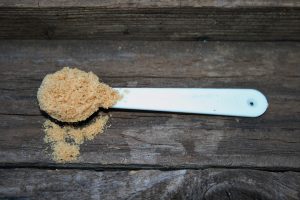Table of Content
FSSAI Standards For Mustard

India is the second largest mustard growing country in the world after China. The name ‘mustard’, is derived from the Latin word mustum, or must. Followed by groundnut, mustard is an important source of edible vegetable oil. The cultivation of mustard is mainly done in northern India because of late maturity and shattering of pots owing to high temperature prevailing during harvest in the months of February – March. As per FSSR mustard can be divided into:
- Mustard (Rai, Sarson) whole
- Mustard (Rai, Sarson) powder
Mustard whole: – The dried, clean and mature seeds from the plant such as Brassica alba. (L). Boiss (Safed rai), Brassica compestris L.var, dichotoma (Kali Sarson), Brassica Compestris, L. Var, yellow Sarson, Syn, Brassica compestris L, var glauca (Pili Sarson), Brassica, compestris L. Var. toria (Toria), Barassicajuncea, (L). Coss et Czern (Rai, Lotni) and Brassica nigra (L); Koch (Benarasi rai). Every food business operator must comply with the parameters as mentioned below: –
| S.No. | Parameters | Standards |
| 1. | Extraneous matter | Not more than 2.0 % by weight |
| 2. | Damaged or shriveled seeds | Not more than 2.0% by weight |
| 3. | Moisture | Not more than 10.0 percent
by weight |
| 4. | Total ash on a dry basis | Not more than 6.5 percent
by weight |
| 5. | Ash insoluble in dilute HCl on a dry basis | Not more than 1.0 percent by weight |
| 6. | Non-Volatile ether extract on a dry basis | Not less than 28% by weight |
| 7. | Volatile oil content on a dry basis | Not less than 0.3 percent by v/w
|
| 8. | Insect damaged Matter | No more than 1.0% by weight |
| 9. | Allyl isothiocyanate (m/m) on a dry basis
a) B nigra |
Not less than 1.0 percent by
Weight |
| b) B Juncea | Not less than 0.7 percent by
Weight |
|
| 10. | P-hydroxybenzyl iso-
thiocyanate (m/m) on dry basis in sinapist alba |
Not less than 2.3 percent by
Weight |
| 11. | Argemone seeds | Absent |

- Mustard powder- Powder can be obtained by grinding dried, clean mature seeds of one or more of the plants of Brassica alba. (L). Boiss (Safed rai), Brassica compestris L. var, dischotoma (Kali Sarson), Brassica Compestris, L. Var, (yellow Sarson), Syn, Brassica compestris L, var glauca (Pili Sarson), Brassica, compestris L. Var. toria (Toria), Barassicajuncea, (L). Coss et Czern (Rai, Lotni) and Brassica nigra (L); Koch (Benarasirai) without the addition of any other matter. Mustard Powder has characteristic pungent aromatic flavour free from rancidity and mustiness. The standard parameters for the same are as mentioned below:-
| S.No. | Parameters | Standards |
| 1. | Moisture | Not more than 7.0 percent
by weight |
| 2. | Total ash on a dry basis | Not more than 6.5 percent
by weight |
| 3. | Ash insoluble in dilute HCl on a dry basis | Not more than 1.0 percent by weight |
| 4. | Non-Volatile ether extract on dry basis | Not less than 28.0 percent by weight |
| 5. | Crude Fibre | Not more than 8.0 percent by weight
|
| 6. | Starch | Not more than 2.5 percent by weight
|
| 7. | Test for argemone oil | Negative |
Both powder and whole mustard shall be free from mould, living and dead insects, insect fragments, and rodent contamination. The powder shall be free from Argemone maxicana L. and added colouring matter.
References: –
- Madhusoodan KJ et al. Mustard Cultivation Practices.2004.pdf.Available at: https://www.researchgate.net/publication/308595972_MUSTARD_-_CULTIVATION_PRACTICES.Accessible on 05.06.2019
2.Compendium_Food_Additives_Regulations_29_03_2019.pdf. Available at:https://foodregulatory.fssai.gov.in/All%20Docs/Food%20Standards/compendium/Compendium_Food_Additives_Regulations.pdf.Accessible on 05.06.2019.
Enquire Now
To enquire about our services please complete the form below and we will be in tough with you as soon as possible
Food Regulatory Services
- Consumer Product
- Compliance Services
- Licenses